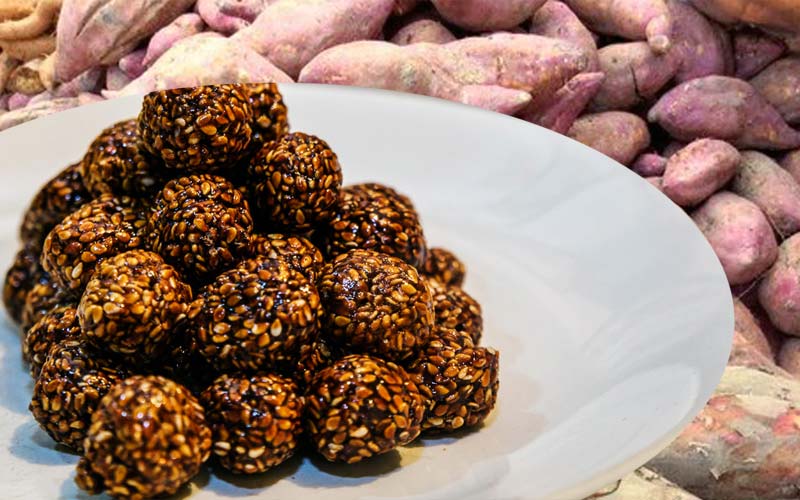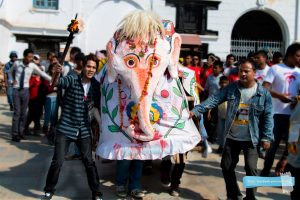
Celebrating Maghe Sankranti Across Nepal
Maghe Sankranti, also known as Makar Sankranti, is a special festival celebrated all over Nepal. Many communities like the Brahmins, Chhetris, Tharus, Magars, Kiratis, and Newars take part in this festival in their own unique ways.
What Does Maghe Sankranti Mean?
The name of the festival tells us a lot. “Maghe” comes from the month of Magh in the lunar calendar, and “Sankranti” means the start of a new month. This day marks the time when the Sun moves from one zodiac sign to another—from Sagittarius to Capricorn. It also signals the start of longer and warmer days as the Sun begins its journey northward, known as Uttarayan. People believe this is a lucky time of the year.
Holy Bathing Rituals on Maghe Sankranti
A big part of Maghe Sankranti is taking a holy bath. Many people visit rivers to wash away sins and seek blessings. Popular spots include Sankhamul near Patan, Triveni by the Gandaki/Narayani River, Devghat in Chitwan, Ridi along the Kaligandaki River, Chatara and Barahakshetra near the Koshi River, Dolalghat on the Sun Koshi River, and Setibeni in Parbat. These places often host fairs where people can buy offerings, enjoy special foods, and celebrate together.
A Celebration of the Harvest
This festival is also important because it marks the end of the harvest season. In every part of Nepal—whether in the hills, mountains, or plains—farmers store their crops before this day. It’s a time to relax, celebrate, and thank nature for the harvest. People also pray for a good harvest in the coming year. This tradition reflects the old practice of worshipping nature.
Traditional Foods and Family Gatherings on Maghe Sankranti
After bathing, families gather to share a festive meal. Typical foods include sesame seed sweets (til ladoo), molasses, ghee, sweet potatoes, yams, sel roti, lentil pancakes, and khichadi (a mix of rice and lentils). These foods are rich in energy and help keep people warm in the cold weather. Many families invite married daughters and their families to celebrate together. It’s a day to show respect to elders, strengthen family bonds, and enjoy good food.
Tharu Community’s New Year Celebration on Maghe Sankranti
For the Tharu community in southern Nepal, this festival is one of their most important events. They celebrate it as the start of their new year. The celebrations last for a week and include rituals, community gatherings, and fairs. People wear colorful traditional clothes, jewelry, and headgear. There’s music, dancing, and lots of food. During this time, they also choose a village leader and make plans for the year ahead. Groups that work to preserve Tharu culture often organize special events during this festival.
Festivities in Kathmandu
In Kathmandu, people celebrate Maghe Sankranti in many places. One big event happens in Chuchepati, Boudha, where large crowds gather for traditional dances, songs, and food. Another event is organized by the Nepal Magar Sangh at Tundikhel in central Kathmandu. People wear colorful clothes and heavy jewelry, and there are community processions and celebrations. The Newar community also has its own way of celebrating. Younger family members visit their elders to get blessings. Elders apply oil to their heads, which is believed to protect against the cold, and share warm, comforting foods. Married daughters are also invited home to join the festivities.
Bullfighting Festival in Nuwakot
A unique tradition during Maghe Sankranti is the bullfighting festival in Taruka village, Nuwakot, northeast of Kathmandu. Thousands of people come to watch bulls lock horns in an open field. This year, 23 pairs of bulls competed, and the winners received prizes. The festival is believed to have started in the late 19th century and is now popular among locals and tourists. Bulls are given special food to prepare for the fight. Traditional music is played during the event, and although the area is fenced for safety, it becomes exciting if a bull runs toward the crowd.
The Makar Mela in Panauti
Another big event during Maghe Sankranti is the Makar Mela in Panauti, a historic town 32 kilometers southeast of Kathmandu. This fair happens every 12 years at the holy confluence of three rivers—Roshi, Punyawati, and the invisible Lilawati. The area is full of old temples, monuments, and public resting places, making it a sacred site. The fair lasts for a whole month, and even the president of Nepal attends the event.
Celebrations Beyond Nepal
Maghe Sankranti is not just celebrated in Nepal. It’s also observed in neighboring countries like India, Bangladesh, and Sri Lanka. No matter where it’s celebrated, the festival reminds us to be thankful for nature, spend time with family, and preserve our culture. It’s a way to connect with the environment, live in harmony, and pass down traditions to future generations.




